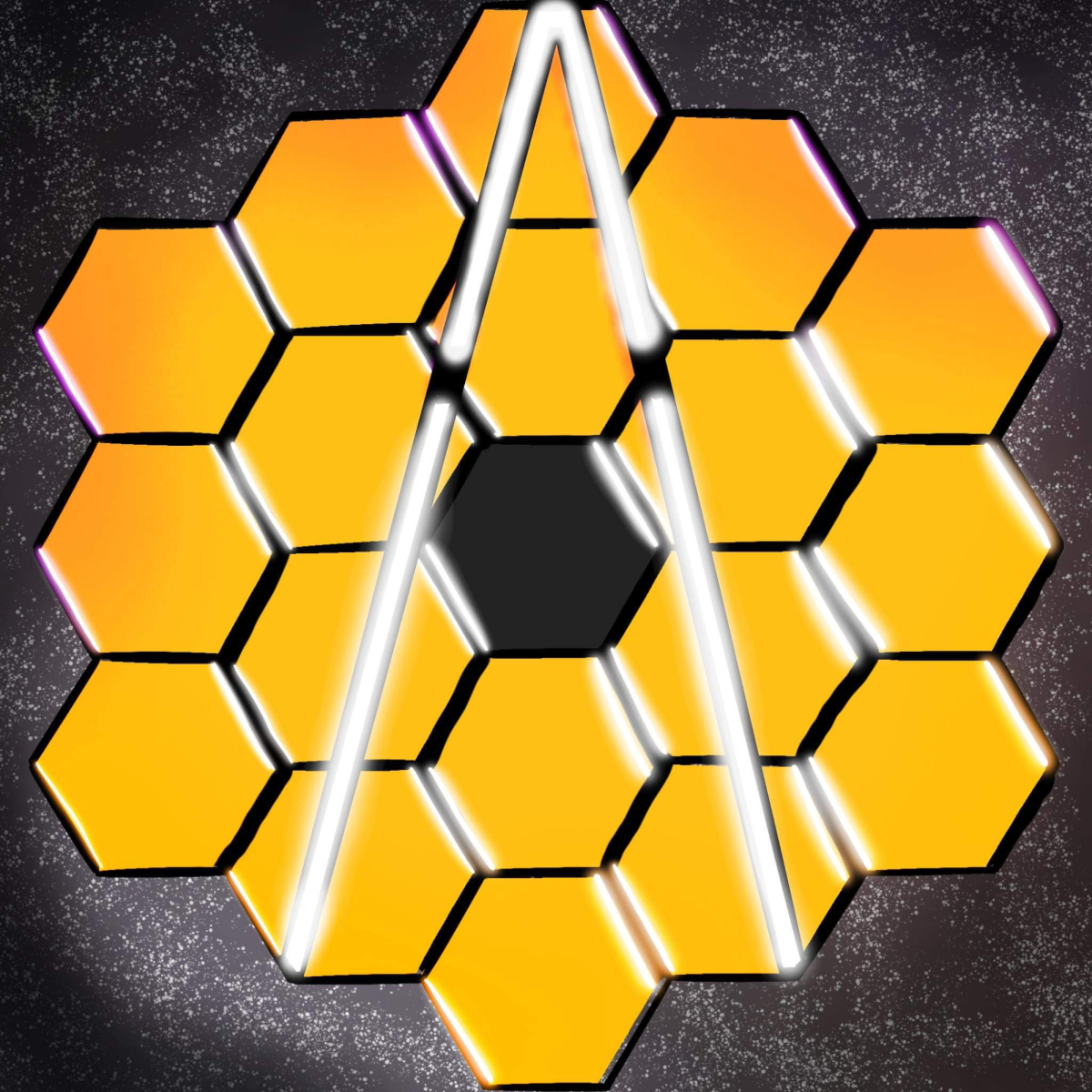New means of space exploration
The intricate honey-comb like design helps for maximum reflection of infrared light.
The James Webb Space Telescope is a new and innovative tool currently being used for space exploration. Although the iconic Hubble telescope has made countless discoveries, The James Webb seeks to look even deeper. “If we think of Hubble’s images as like television in the 1990’s (in standard definition), the images from JWST will be like television is today in 4K; beautiful, crisp and vibrant images from every corner of our galaxy. Look for those first images from JWST being published around July or August of this year” Lucas Snider, a chemistry and physics teacher at Stockbridge High School states. The telescope was specifically designed to travel millions of miles from the Earth’s atmosphere in hopes of finding the first galaxies that formed in the early universe. NASA also hopes to witness stars forming new planetary systems.
The construction of the James Webb is very clever and different from any other previous telescope. The telescope stands 28 feet tall and about 44 feet long. Eighteen gold-plated mirrors help collect all the needed data. Gold is a highly reflective substance at infrared wavelengths. This helps focus light from far-distanced objects onto the telescope’s intricate instruments.
Development for the James Webb Telescope began in 1996. The launch was originally planned for 2007, while the actual launch took place on Christmas of 2021.
The budget varied completely from when the idea of the telescope was first developed. The original budget for the James Webb was set at 500 million U.S. dollars. The actual build cost was far from that however. Around ten billion U.S. dollars were spent to build the telescope. Scientists hope to learn more about many of the black holes in our solar system. One black hole named Sagittarius A has a tendency to flare on an hourly basis. This is very abnormal and many wonder why it does this. The consistent flares also make the black hole difficult to capture through pictures. These flares occur as a result of light particles accelerating around the blackhole.
The premise of the frequency of these flares are somewhat unknown to scientists. NASA has high hopes that the advanced design of the James Webb Telescope will allow it to get clear images of the black hole. NASA expects to collect data through the telescope so that they can receive more information about Sagittarius A and black holes in general.
“We want to know how the universe works, because we are part of the universe. Black holes could hold clues to some of these big questions,” Farhad Yusef-Zadeh, an astrophysicist at Northwestern University, says. One of man-kind’s most detectable features is our pollution. This also means that we may be able to discover other species by analyzing their own planet’s atmosphere and looking for similarities to Earth’s.
The James Webb Space Telescope is extremely advanced and a very intricate piece of technology. With all kinds of new speculations and rumors going around about the universe. The James Webb may be able to help us either debunk or prove some of those speculations. This Telescope is an extremely important milestone in humanity and will further educate and benefit mankind.
Q&A with Mr. Snider
Q: What are some of the important attributes to the James Webb?
A: “JWST can look for heat signatures of distant galaxies. And astronomers are hoping to use JWST as a kind of time machine by pointing the telescope toward the deepest recesses of our Universe and hoping to capture light that has been traveling for 13 billion years.”
Q: Do the James Webb and Hubble Telescopes collect data similarly?
A: “JWST doesn’t look at the visible light spectrum like Hubble does, so JWST won’t take “pictures” like Hubble does. But we will be able to create a digital rendering from the light that is captured by JWST, and the quality of these images should be superb!”
Q: What separates The James Webb Telescope from previous space telescopes such as The Hubble Telescope?
A: “The spectrometers outfitted on JWST are specifically tuned to capture light in the Red region of visible light and the Near to Mid-InfraRed range (InfraRed light is lower in energy compared to visible light, and thus has a little longer wavelength).

Kathryn Brumm is the Social Media Manager for Uncaged. She enjoys writing, singing and drawing. This is her second year on Uncaged, and also participates...








